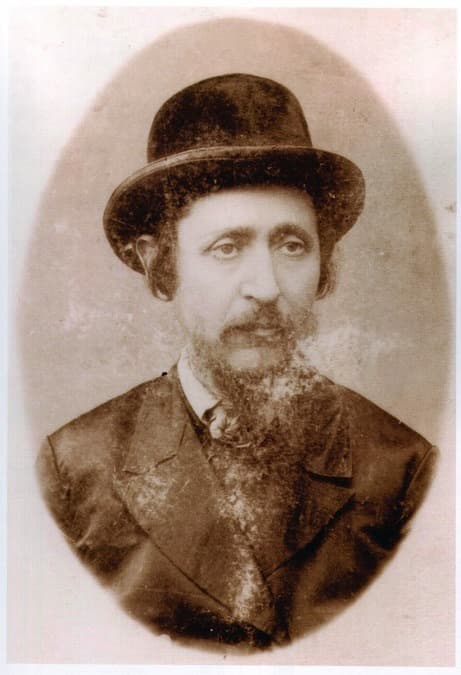Holy Mystery
The Tragic Mystery of the Rebbe Who Vanished
He vanished in the mikvah before Shabbat. A century later, the mystery of the Trisk Rebbe’s death remains unsolved.

Today marks 107 years since the death of Yaakov Leib'nu Twersky, the second Rebbe of the Trisk Hasidic dynasty.
Trisk was an offshoot of the Chernobyl dynasty, a Hasidic family that effectively ruled the communal and spiritual life of Ukrainian Jewry in the 19th century. They decided who would serve as rabbi, mohel, shochet, teacher—and who would be removed from office if found disloyal to the Rebbe and his court.
Avraham Twersky, Yaakov Leib'nu’s father and son of Mordechai, the founder of the Chernobyl dynasty, moved to Poland, where crowds flocked to him, viewing him as a holy man. Upon his death in 1889, Yaakov Leib'nu inherited his position. But it was a time when Orthodox Judaism in Poland was in sharp decline, facing the rise of the Haskalah (Jewish Enlightenment), Zionism, and socialism—and Yaakov Leib'nu did not enjoy the same success as his father.
From a young age, Yaakov Leib'nu was described as studious and diligent, but also prone to “black bile”—in other words, melancholic and depressive.
After 25 years of leadership, World War I broke out. Yaakov Leib'nu was forced to flee, leaving behind his home and his court, escaping the horrors of war. He fell into poverty so severe that in 1916 he wrote to his followers in the U.S., pleading for financial help.
After the war, he wandered from place to place, and during one visit to the town of Hrubieszów, Poland, he stayed for Shabbat. According to followers, in the days leading up to Shabbat, the Rebbe secluded himself in his room and dropped hints about his impending death. On Friday, he went to immerse himself in a ritual bath in preparation for Shabbat—and “passed away during the immersion.” His followers interpreted the Rebbe’s odd behavior and cryptic statements as signs of ruach hakodesh (divine intuition) foretelling his death.
But if we momentarily set aside the Hasidic interpretation and look at this through the eyes of, say, a police investigator—we have here what looks, walks, and quacks like a duck... well, you can finish the sentence yourself.
Was this a tragic coincidence that ended in cardiac arrest? Or did the Rebbe’s fragile and melancholic soul, long burdened by trauma and exile, finally break—and choose to end his life?
There’s no way to know. What is certain, however, is that this is not the first time in Hasidic history a Rebbe has been suspected of taking his own life. A perhaps even clearer case predates the Trisk Rebbe: that of Yaakov Yitzchak Horowitz, the “Seer” of Lublin, one of the most revered figures in Hasidic history. He fell from the window of his room and later died of his wounds.
The more realistic among his followers claimed the Rebbe had been drunk (this occurred after the Simchat Torah hakafot dances), stumbled, and fell. The more devout insisted that demons and “forces of impurity” had battled him due to his efforts to bring the redemption (the Seer was in a state of messianic ecstasy during the Napoleonic Wars) and physically dragged him out the window. Professor David Assaf has explored the case in detail in his book, and I won’t elaborate here, but the circumstantial evidence seems to point toward suicide.
Did the same scenario repeat itself a century later with the Trisk Rebbe?
Only God knows.